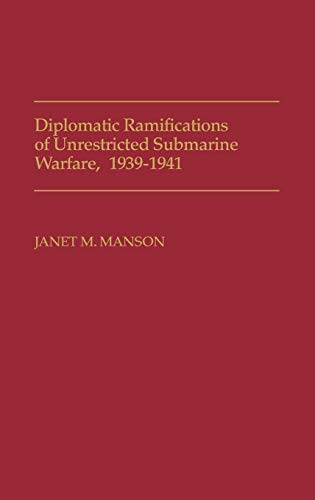
Diplomatic Ramifications of Unrestricted Submarine Warfare, 1939-1941
by Janet Manson
Popularity
0.87 / 5
* A book's popularity is determined by how it compares to all other books on this website.
Where to buy?
Buy from Amazon* If you buy this book through the link above, we may receive a small commission at no extra cost to you.
Diplomatic Ramifications of Unrestricted Submarine Warfare, 1939-1941 by Janet Manson
Details
War:
World War II
Perspective:
Researcher
True Story:
Yes
Biography:
No
Region:
Europe
Page Count:
248
Published Date:
1990
ISBN13:
9780313268946
Description
Main Themes and Topics
In "Diplomatic Ramifications of Unrestricted Submarine Warfare, 1939-1941," Janet Manson tackles the complex and nuanced topic of unrestricted submarine warfare and its diplomatic consequences. The book situates the American decision of 1941 within a broader historical context, examining its roots in policies and decisions reached during World War I. Manson explores the shift in U.S. foreign policy to adopt a strategy previously condemned, questioning the implications of such a reversal. The book provides a comprehensive multinational perspective, primarily by integrating newly available archival data from both U.S. and West German sources. Through detailed research, Manson uncovers the intricate political, economic, and legal debates that surrounded the adoption of unrestricted submarine warfare.
Writing Style and Tone
Janet Manson's writing is characterized by a meticulous and scholarly approach, with a strong emphasis on archival research and historical accuracy. The tone is academic and authoritative, designed to engage both scholars and readers interested in naval history and diplomatic studies. Manson's style allows the reader to grasp the complexity of the historical events while maintaining clarity and precision in her arguments.
Brief Summary
"Diplomatic Ramifications of Unrestricted Submarine Warfare, 1939-1941" delves into the strategic decision by the United States to engage in unrestricted submarine warfare, analyzing how this approach marked a significant turn in U.S. foreign policy. Janet Manson offers an in-depth exploration of this decision, examining multifaceted aspects such as military strategy, international law, and historical precedent. The book spans events from Germany's use of similar tactics in World War I to the American adoption of this policy in 1941, ultimately reflecting upon the implications these actions had on global diplomacy and warfare practices.









